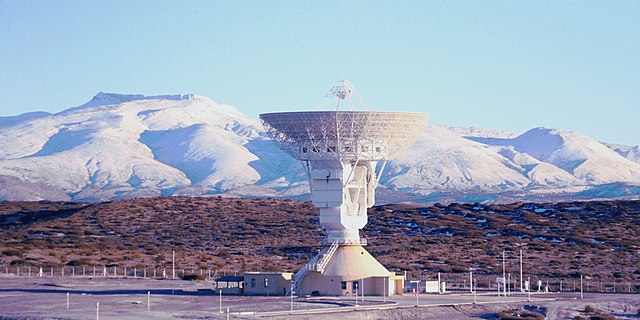 Photo courtesy of CONAE
Photo courtesy of CONAE
U.S. National Security and China’s Long Game in Latin America
While Chinese economic engagement with Latin America is not immediately harmful to U.S. national security interests, the influence that accompanies China’s recent and rapidly expanding entanglements in the region is causing concern for U.S. strategic thinkers. Domination of mining sectors enables China to deny U.S. access to critical resources, infrastructure projects cultivate relationships and positions for projecting Chinese power, and import and export market dependence makes Latin American states susceptible to Chinese pressure on political and military issues. In the lens of grander U.S.-China rivalry, Chinese activity in this region amounts to an extension of the traditional security competition to a new strategic theatre in the U.S. periphery, which warrants greater attention in U.S. national security strategy.
Raw Materials in Latin America
Using direct investments, corporate mergers and acquisitions, and loans as vehicles for securing mine ownership, China ensures its continued access to critical mineral inputs for advanced weapon manufacturing and renewable energy technologies with the implicit ability to restrict U.S. access to these same resources. This includes a near monopoly on the niobium mined in Brazil, which is used for military aircraft engines due to its ability to withstand high temperatures. These mines are one of the only sources of the rare earth mineral outside of China, making it the second highest supply chain risk to U.S. national security manufacturing needs. China also maintains several large stakes in the lithium mines of Chile, Argentina, Bolivia, and Mexico, which combined comprise the largest concentration of lithium on the planet. Lithium is used in batteries that are crucial to powering modern military electronics and hardware as well as storing renewable energy for everything from electric cars to solar panels and wind turbines, making them vital for the future engines of a healthy economy.
Power Projection
Chinese infrastructure investment in Latin America likewise presents new risks for U.S. national security. The construction of “dual-use assets,” most notably several dozen deep water ports that Chinese firms have been contracted to build, provide both commercial and military value since they can host larger shipping vessels as well as warships. A Chinese space radar and communications facility in Argentina likewise offers benign benefits to China’s space program while also enabling surveillance and targeting of U.S. satellites. The base, operated by the People’s Liberation Army and not China’s space agency, nonetheless opens the door for a snowballing Chinese military footprint in the region to protect the assets that state-affiliated corporations build. Diplomatically, China may also push for a sphere of influence over the Panama Canal, where it has already leased and deepened ports on either side of the waterway, supplied logistics and electricity to the Canal, and granted Belt and Road Initiative funding for other Panamanian infrastructure. In total, these positions provide China with a logistical and basing network to extend, sustain, and project military power into the Western hemisphere according to SOUTHCOM.
If U.S.-Chinese competition ever escalates to war, the Chinese presence in Latin America will afford it numerous strategic advantages. Given the proximity of U.S. allies and bases to China, including Australia, Japan, and South Korea, Beijing could compensate for its encirclement in the Pacific with a pre-existing power projecting force in the Southern Hemisphere to hold U.S. assets at risk. China’s position would also enable the PLA to interfere with U.S. logistics to the Pacific, and at a minimum would divert U.S. resources away from the principal conflict. In sum, a military posture in Latin America provides options for Beijing.
Leverage
Ultimately, the most concrete gain from Chinese economic engagement in Latin America is leverage over the alignment of the continent in the context of global U.S.-China competition. Currently, China is the top trading partner of Brazil, Chile, Peru, Uruguay and the second largest trading partner for many more countries in the hemisphere. These relationships have made these states dependent on Chinese demand for their commodity exports while other countries have accrued “unsustainable” levels of debt to China. These conditions make Latin American countries vulnerable to Chinese influence. For instance, in the past China has used its disproportionate economic power to induce Costa Rica, Panama, El Salvador, and the Dominican Republic to renounce diplomatic recognition of Taiwan. Similarly, China could choose to persuade or intimidate Latin American states to open ports, airfields, factories, farms and oilfields exclusively to the PLA for sustaining military operations against the U.S. during a future crisis. More likely is that China will use its influence in Latin America to build coalitions and pressure points capable of weakening the ability of the U.S. pursue its international interests—a scenario against which the U.S. should better fortify its relationships to the south.





